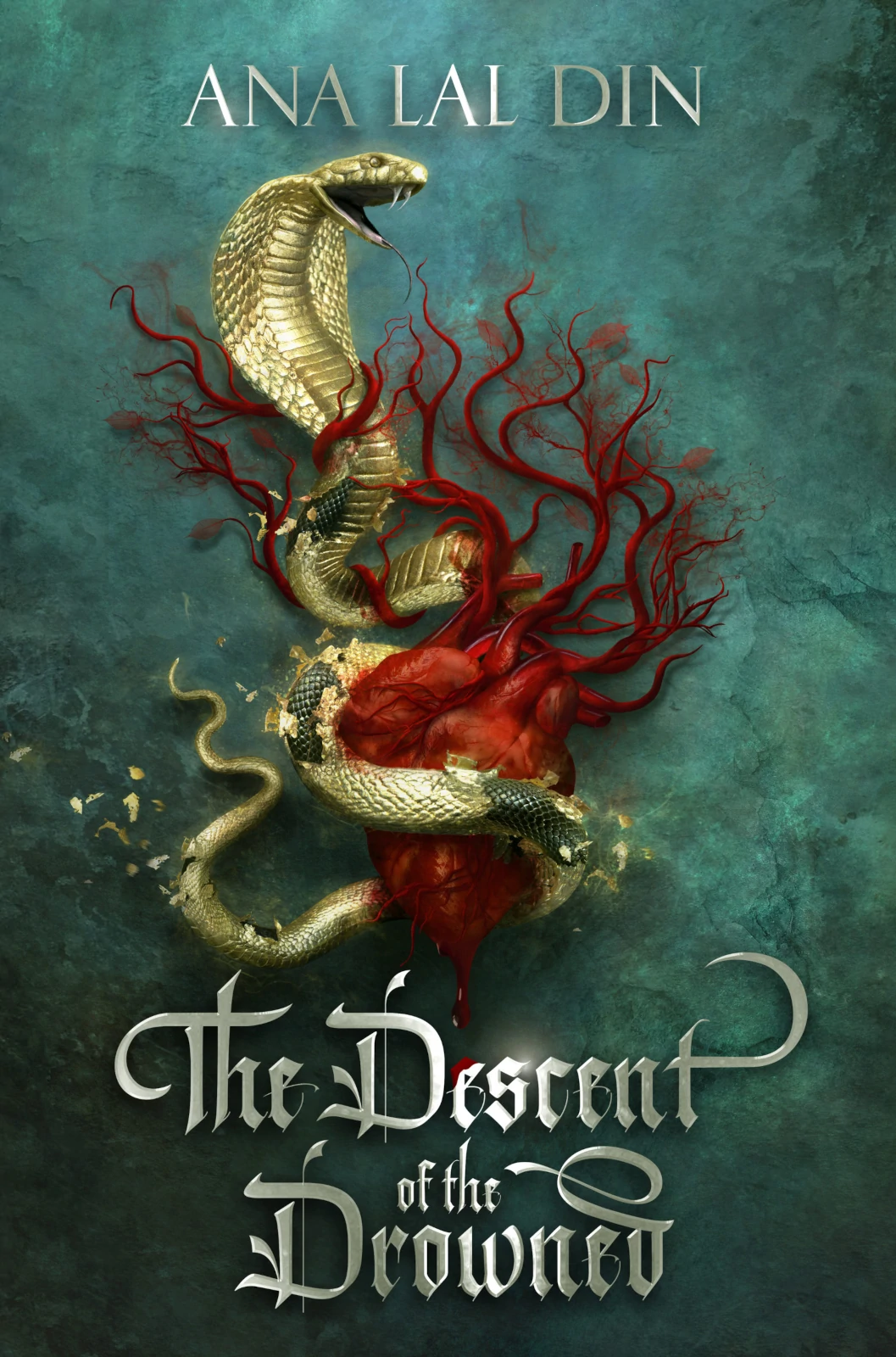
A Review of The Descent of the Drowned by Ana Lal Din
Words By Esther Hsu
Published March 15, 2021 by White Tigress Press
The Descent of the Drowned by Ana Lal Din is a fantasy novel steeped within Islamic-Arabian mythology. Throughout the novel, Ana Lal Din’s main characters take center stage in a serious, tragic, and heart-wrenching story.
Readers learn about the world through the eyes of two characters: Roma and Levi. Roma, from the lower zaat (or caste), is a sacred prostitute (read: slave) who refuses to let others dictate what they can do to her body. On the other hand, Levi, a highly sensitive person raised to be a killer and executioner, is the casteless son of a tyrant. The two live vastly different lives, but both strive towards a common goal: freedom.
It is a difficult read. The novel explores a variety of mature themes such as rape, torture, murder, self-harm, trauma, and physical and emotional abuse without any sort of sugar-coating. But that’s also what makes this novel so powerful. Lal Din’s exploration of these two characters, the trauma they face, and the effect it has on their lives are very well-developed. Readers get a front-seat view of the internal thoughts and motivations of these two. But as I was reading the novel, I found myself feeling extremely frustrated. Lal Din expertly frames society as oppressive, often blaming victims for situations that society itself enforced upon individuals. This is true of Roma and Levi’s situations, as well, and I just couldn’t help but desire to protect them despite their faults.
That’s also where Lal Din makes her characters shine: they are very human and complex individuals with oftentimes conflicting motivations. Roma seeks to protect those she loves, but what if that means protecting her oppressor and the other girls who have been indoctrinated by this oppressor? Leviathan wants to see a world where those belonging to a lower zaat don’t have to hunger or want. But what if murder is the only way he knows how to make that happen? The conflict these characters feel and their back-and-forth in emotions show readers just how human they are.
Where the novel falls short, however, is its pacing. Though the plot summary mentions a “tyrant [who] hunts an ancient treasure that will doom humankind,” readers don’t see much mention of this until the last eighth of the book. Similarly, Lal Din dedicates the first quarter of the book to world-building and character introductions. Even then, the world-building still felt incomplete—the characters mention magic at various points, but by the end of the novel, I still had no clue how magic actually works in this world. The vast number of secondary characters also made it difficult to keep track of them all. I found myself flipping back and forth trying to remind myself who each character was. Combined with an excessive amount of exploration into Roma and Levi’s trauma that fails to further the plot, the pacing of the novel needed more work.
Overall though, The Descent of the Drowned is a solid read. While not without its faults, it does transport readers into another world, one that is beautifully described. Since this series is meant to be a trilogy, I can only anticipate what Lal Din will do in her next two books.